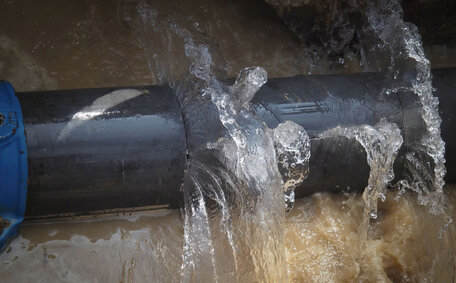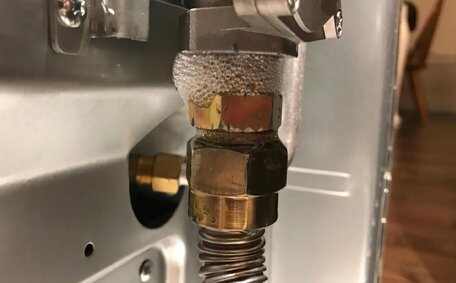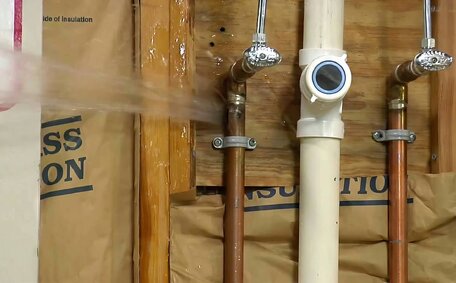Introduction: Drain Snakes vs. Hydrojetting for Clearing Clogged Drains
Residents in Randwick, Sydney, unsure whether to use a drain snake or hydrojetting to clear a clogged drain, will find their different efficacies depend on the situation. While both techniques aim to dismantle debris within pipes, their approaches and efficacy differ depending on the situation.
Drain snakes, with an inner cable and a curved tip, dislodge and retrieve blockages inside pipes. Hydrojetting blasts high-pressure water to clean pipe walls and remove debris. Each method has its advantages and drawbacks, suitable for varying scenarios.
This article provides a detailed comparison of drain snakes versus hydrojetting to inform Randwick residents about the best drain clearing method for their unique situations. We’ll explain the suitability, effectiveness on various clogs, and consider factors such as invasiveness and risk of pipe damage.
Continue reading to learn which option is most suitable for your home.
How Drain Snakes Work to Remove Minor Clogs
Drain snakes are long, flexible cables that dislodge minor clogs within pipes and are effective up to about 10 metres. The snake has a curved metal tip to navigate smoothly through the bends of a drain.
The procedure involves manually feeding the metal tip through the drain’s external opening into the clogged pipe. Snaking the drain involves cranking the device to spin its length deeper into your drain. Thanks to its flexibility, the tool can reach obstructions found near the entrance of drain channels.
As it rotates, the scraping metal tip is able remove accumulated gunk, hair, and other debris tangled in the pipe walls. This method is effective for relieving clogs from easily dislodged material buildup. The snake is an option clearing as its spinning and pulling action helps to disrupt the clog, allowing water to flow again.
Plumbers snakes are ideal for DIY resolution of minor kitchen or sink clogs, not for severe sewer line problems. They offer a user-friendly option for freeing up mild blockages in your pipes too, before enlisting the aid of a professional plumber.
Determining When to Utilise a Drain Snake
Engaging snaking best often emerges as the introductory approach when attempting to disperse minor clogs of different types within sinks, tubs and small drains. They work well for removing built up gunk, hair, and debris that may be causing a shallow blockage.
Signs that a drain snake is the appropriate solution include:
- Water draining slower than usual
- Gurgling sounds coming from the pipes
- Sinks/tubs taking longer to empty
- Unpleasant odours coming from the drain
However, snakes should not be used in toilets or main sewer lines.
Additionally, they effectively tackle minor kitchen sink clogs.
A significant advantage of using a drain snake is its ability to provide a swift at-home solution before resorting to a professional plumber. Just be careful not to over-crank the snake once resistance is met, as too much force can break pipes.
If the clog is minor and easily accessible, it could save time and money.
Limitations and Drawbacks of Drain Snakes
Although effective for minor clogs, drain snakes have limitations:
- Not effective for addressing deep plumbing issues or significant blockages located beyond 10 metres within the pipe
- Can simply push debris further down the line, causing reoccurring clogs
- There is a risk that the snake may get stuck or scratch the pipes if too much force is applied
- Unable to clear clogs caused by large objects, roots, or collapses
Using a drain snake with excessive force can damage pipes, potentially escalating into more serious problems. They are best suited for clearing out surface-level debris and buildup.
Drain snakes are likely ineffective for deeper sewer line clogs within sewer pipes due to tree roots, damaged pipes, or large objects stuck within. Persistent drainage issues after snaking warrant a plumber’s inspection to diagnose and resolve the underlying problem without damaging your plumbing.
Understanding Hydrojetting: A Powerful Method for Serious Clogs
Hydrojetting, using an intense blast of pressurized water, is employed to dislodge stubborn clogs deep within pipes. Hydrojetting excels in removing obstructions of all kinds and is especially effective against tree roots and grease blockages.
A machine featuring powerful hydro jets connects to the problematic drain or clogged sewer pipe, typically through a cleanout or manhole. High-pressure water is pumped from the hydro jetting machine down pipe through a narrow hose inserted into the drain line. As the hose is steadily pushed through pipe, the powerful stream water scours the pipe walls in a rotational motion.
The hydrojetting process showcases a powerful blast of water that disintegrates roots and dislodges embedded clogs, effectively flushing out thick deposits. This includes cutting through intruding tree roots, pulverising heavy grease buildup, and flushing out mud, sand, rocks, and other debris. The broken up material then come out down the drain sewer for disposal.
When dealing with clogged pipelines, hydrojetting boasts clear benefits over traditional snaking methods:
- Can clear fully blocked pipes other methods can’t penetrate
- Effectively reaches clogs far beyond a snake’s 10 metre reach
- Blasts apart tough obstacles like tree roots and grease
- Less risk of pipe damage due to lack of physical force
- Thorough cleaning leaves pipes clearer for longer
For substantial clogs that remain after snaking, hydrojetting’s extreme water pressure becomes the preferred solution. It’s also great for preventative maintenance cleaning of older pipes prone to hefty grease or mineral deposits over time. Learn more about whether hydrojetting is the right choice for your situation by consulting a professional plumber.
Benefits of Hydrojetting for Thorough Pipe Cleaning
Hydrojetting offers numerous advantages for meticulous work to clean pipes thoroughly:
- Scours entire circumference of pipe walls, not just the top section a snake reaches
- Removes hardened deposits lining pipes that snakes can simply push down
- Cleans debris out of pipe junctions, bends and traps
- Reduces risk of future clogs by eliminating buildup
- Can prolong pipe lifespan by preventing corrosion
- Allows inspection of pipe condition with camera after cleaning
Hydrojetting, removing all traces of sediment, grease, and roots, provides more thorough drain cleaning than snaking. It keeps pipes clearer for longer by preventing leftovers that could accumulate into new clogs.
Many homeowners opt for regular hydrojetting maintenance every 12-24 months to safeguard future plumbing health by minimising debris accumulation. Catching issues early is key to avoid emergency blockages down the track. Hydrojetting combined with CCTV inspection also enables detection of pipe damage needing repair.
For extremely stubborn blockages in drains up to 300 metres, hydrojetting is the premier choice. It’s the only method powerful enough to truly finalise clogs that evade drain snakes time and again.
Risks and Considerations with Hydrojetting Old Pipes
Despite its effectiveness, hydrojetting’s high water pressure poses risks for older or compromised pipes, requiring prudent consideration:
- Pipes that are extensively corroded, cracked or have joints compromised by tree roots can potentially burst under the 5000 PSI water pressure
- Leaks or collapses caused by hydrojetting old pipes would require immediate repair work
- A sudden failure of an underground pipe could lead to water infiltration of surrounding soil and structures
Due to these risks, professional plumbing inspection using CCTV cameras to assess pipes beforehand is crucial. This allows for home improvement by identifying weak spots and seriously compromised areas first.
For pipes that are structurally sound overall but still older, most professional plumbers can adjust their hydrojetter’s water pressure to an appropriate level. This enables safe cleaning without overstressing the older lines.
In many cases, partial hydrojetting combined with other methods may be recommended. For example, strategically snaking the most fragile sections first while hydrojetting the rest. There are always alternatives to make sensible allowances for older pipes’ limitations when needed.
The bottom line is that while hydrojetting can be done safely on pipes over 50 years old in good condition, unchecked use at full pressures poses substantial risks. Always consult with the owned and operated professional plumbers at Randwick Plumbing if you have any uncertainties about your pipes’ integrity or their ability to withstand hydrojetting.
Comparing Effectiveness: Which Method is Best?
When weighing up drain snakes versus hydrojetting, there are a few key factors to consider regarding effectiveness for clearing various pipe clogs:
Cost
| Drain Snakes | - Cost-effective and suitable for DIY usage |
| Hydrojetting | - Professional-grade equipment incurs higher initial costs |
For minor line clogs, you can use plumbing techniques such as a plumbing snake as an affordable DIY solution. But Hydrojetting requires pricey professional equipment and service costs for more serious clearing clogs.
Depth Reach
| Drain Snakes | - Typically effective to a depth of about 10 metres |
| Hydrojetting | - Capable of clearing pipes up to 300 metres in length |
Hydrojetting can navigate through dense clogs with its intense pressure, offering a significantly broader cleaning depth than standard drain snakes.
Safety for Old/Damaged Pipes
| Drain Snakes | - Risk of damaging pipes exists if applied with excessive force |
| Hydrojetting | - Can potentially damage structurally weakened pipes |
Yet, both approaches carry risks for older pipes, hence a professional assessment is recommended to evaluate their condition.
Effectiveness by Clog Cause
| Hair & Debris | Either method may clear shallow sink clogs |
| Tree Roots | Hydrojetting more effective |
| Grease Buildup | Hydrojetting more effective |
Hydrojetting outperforms other methods with its superior ability to clear more challenging clogs that go beyond mere hair or debris blockages.
The most suitable drain clearing method depends on the specific circumstances. To ensure pipes remain undamaged and to choose the best option, call professional assistance from the team at Randwick Plumbing on 1300 349 338.
Professional Drain Assessments for the Right Solution
A professional drainage inspection is strongly recommended before conducting any cleaning on older or questionable pipes.
The expert team at Randwick Plumbing offers comprehensive drain assessments, including:
- High-definition CCTV pipe inspections to identify damage or weaknesses
- Consultations to determine the safest and most effective solutions for your unique issues
- Free quote outlining various suitable drain clearing options
Taking advantage of Randwick Plumbing’s tailored drain assessments eliminates the risks of exacerbating pipe problems. It also provides you with personalised recommendations so the optimal method can be selected for your circumstances.
Whether your lines are very old, have known tree root infiltration or you simply want professional guidance, call 1300 349 338 to book a thorough drain inspection today before proceeding with any works.
Contact Randwick Plumbing for Clogged Drain Expertise
When dealing with a stubborn drain clog that persists despite your best efforts, it’s time to call in the experts. The team at Randwick Plumbing is highly versed in modern plumbing techniques for clearing blocked drains and repairing damaged pipes.
We use state-of-the-art equipment like high-pressure hydrojetters and CCTV cameras for effective clearing of drain issues, including sewer repair. We’ll thoroughly assess your pipes, advise you on the best solutions, and handle the job with care to keep your plumbing intact.
Randwick Plumbing specialises in cleaning clogged drains and pipes:
- Clearing blocked drains
- Fixing cracked and collapsed pipes
- Repairing sewer leaks
- Cutting intruding tree roots
- Preventative drain cleaning & maintenance
Avoid struggling with persistent clogs - have your local reliable experts at Randwick Plumbing address your plumbing needs today on 1300 349 338. Our highly skilled team is ready to help!






